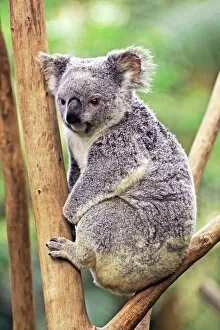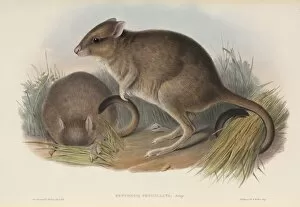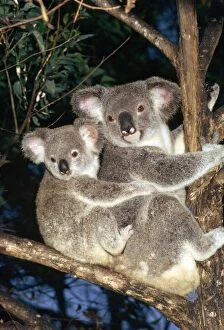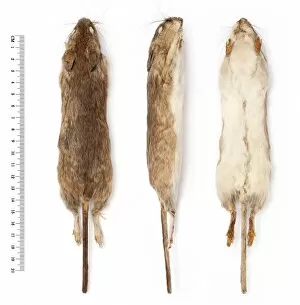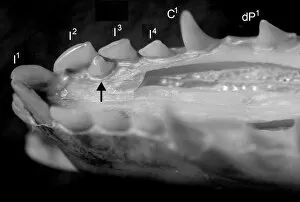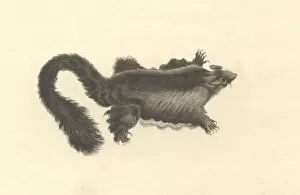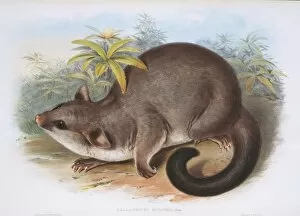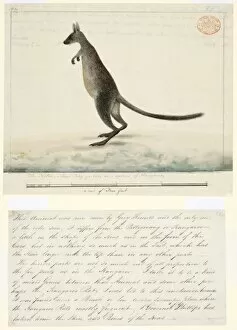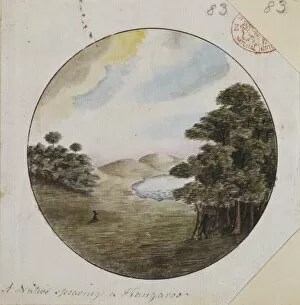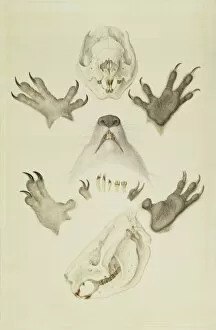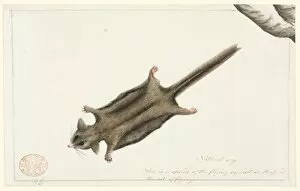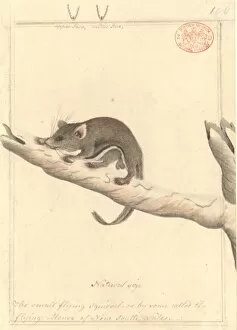Marsupials Collection (page 27)
Marsupials are a type of mammal that are characterized by their unique method of reproduction
2,057 items
All Professionally Made to Order for Quick Shipping
-
Marsupials Collection
Marsupials are a type of mammal that are characterized by their unique method of reproduction. They give birth to very undeveloped young, which then migrate to the mother's pouch and continue their development there and can found mainly in Australia, New Guinea, and South America, but some species have been introduced elsewhere. The most well-known marsupial is the kangaroo, but other species include koalas, opossums, wallabies and wombats. They have adapted to many different environments such as deserts and rainforests. They typically feed on plants or small animals such as insects or rodents. Some it also use their long tails for balance when hopping or climbing trees. All marsupials share a few common traits including a pouch for carrying young and an ability to produce milk for feeding them once they reach the pouch.
+
Our beautiful pictures are available as Framed Prints, Photos, Wall Art and Photo Gifts
The Marsupials collection from Media Storehouse is a stunning array of wall art and framed prints featuring some of the most fascinating mammal animals in the world. These marsupials are known for their unique reproductive system, where they carry their young in pouches until they are fully developed. Our collection includes images of iconic Australian marsupials such as kangaroos, wallabies, koalas, wombats, and Tasmanian devils. Each print showcases the beauty and diversity of these creatures with incredible detail and clarity. From close-up portraits to action shots in their natural habitats, these prints capture the essence of what makes marsupials so special. Whether you're a nature lover or simply appreciate fine art photography, our collection is sure to impress. With high-quality printing techniques and premium materials used for each piece, these prints will make a great addition to any home. They also make excellent gifts for animal lovers who want to bring a touch of wildlife into their lives.
+
What are Marsupials (Mammals Animals) art prints?
Marsupials are a group of mammals that give birth to relatively undeveloped young, which then continue to develop outside the womb in a pouch. Some well-known examples of marsupials include kangaroos, wallabies, koalas, and possums. Marsupial art prints are high-quality reproductions of artwork featuring these fascinating animals. These prints can be used for decorative purposes in homes or offices, as educational tools in schools and museums, or as gifts for nature lovers and animal enthusiasts. The images on these prints showcase the unique physical characteristics and behaviors of various marsupial species in their natural habitats. They may depict scenes such as kangaroos hopping across an Australian landscape or koalas sleeping peacefully in eucalyptus trees. With their stunning colors and intricate details, marsupial art prints offer a beautiful way to appreciate the diversity of life on our planet while also supporting artists who capture its beauty through their work.
+
What Marsupials (Mammals Animals) art prints can I buy from Media Storehouse?
We offer a wide range of Marsupial art prints that are perfect for animal lovers and enthusiasts. You can choose from a variety of options, such as kangaroos, wallabies, koalas, wombats, Tasmanian devils and many more. These art prints showcase the beauty and uniqueness of these fascinating animals in their natural habitats. The Marsupial art prints available at Media Storehouse are high-quality reproductions of original artwork or photographs taken by professional photographers. They come in different sizes to suit your preferences and needs. Whether you want to decorate your home or office with stunning wildlife images or give them as gifts to friends and family who love animals, there is something for everyone. In addition to the beautiful Marsupial art prints available at Media Storehouse, you can also find other types of animal-themed artworks featuring birds, sea creatures, wild cats and more. With so many options to choose from, you're sure to find the perfect piece that captures your heart.
+
How do I buy Marsupials (Mammals Animals) art prints?
To buy Marsupials art prints from Media Storehouse, you can browse our extensive collection of high-quality images featuring various species of marsupial mammals. Once you have found the artwork that catches your eye, simply select the size and format that suits your needs and add it to your cart. We offer a range of printing options including canvas prints, framed prints, and photographic prints. You can choose from a variety of sizes to fit any space in your home or office. To complete your purchase, proceed to checkout where you will be prompted to enter payment information and shipping details. We accept major credit cards as well as PayPal for secure online transactions. Whether you are looking for a stunning piece of wall art or a unique gift for an animal lover, purchasing Marsupials art prints from Media Storehouse is easy and convenient.
+
How much do Marsupials (Mammals Animals) art prints cost?
The cost of Marsupials art prints varies depending on the size, quality, and type of print. We offer a wide range of options for customers to choose from, including canvas prints, framed prints, and photographic prints. Each option has its own unique features that affect the price. Canvas prints are typically more expensive than other types of prints due to their high-quality materials and durability. Framed prints also tend to be pricier as they come with a frame that adds an extra layer of protection and aesthetic appeal. Photographic prints are generally more affordable but still offer excellent image quality. They are available in various sizes ranging from small to large formats. The cost of Marsupials art prints is reasonable at Media Storehouse considering the high-quality products offered. You can find a print that fits their budget while still enjoying stunning artwork featuring these fascinating animals.
+
How will my Marsupials (Mammals Animals) art prints be delivered to me?
We take great care in ensuring that your Marsupials art prints are delivered to you safely and securely. We use high-quality packaging materials to protect your artwork during transit, including sturdy cardboard tubes for rolled prints and flat boxes with protective padding for framed prints. Our delivery partners are trusted couriers who have years of experience in handling delicate items such as artwork. They will ensure that your order is delivered to you promptly and in excellent condition. We offer a range of shipping options depending on your location, so whether you're based locally or internationally, we can get your Marsupials art prints to you quickly and efficiently. Once your order has been dispatched, we'll send you an email confirmation with tracking information so that you can keep an eye on its progress. If there are any issues with the delivery of your order, our customer service team will be on hand to assist you every step of the way.


